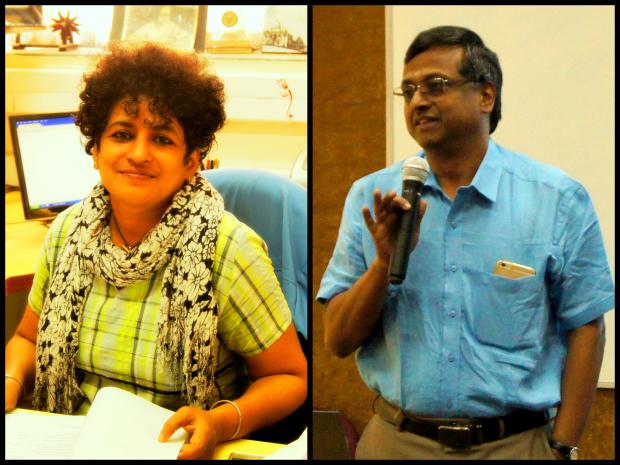
Photo: Siddharth Kankaria / Research Matters
Many lifesaving medical devices such as urinary catheters, pacemakers, intrauterine devices and voice prosthesis, which are usually inserted into some part of the body, are plagued by a common problem – ‘bacterial biofilms’. These ‘biofilms’ grow on the surfaces of these devices and may cause infections. They are harder to treat than individual bacteria and need about 1000 – 10000 times stronger dose of antibiotics. But this may no longer be the case, as a group of scientists led by Prof. Dipshikha Chakravortty and Prof. Jagadeesh Gopalan from the Indian Institute of Science, Bangalore, have found a novel method to fight biofilm infections.
Bacterial biofilms are formed by communities of bacteria, which adhere to a surface as a thin but strong layer, usually embedded in a mucilaginous polymer material that they secrete around themselves. This layer defends the bacteria from antibiotics, making them highly resistant. Bacterial biofilms are associated with infectious diseases like inflammation and tissue damage. While biofilm formation can be prevented to a certain extent by sterilizing the devices being inserted, devices like urinary catheters have a high chance of being infected since they are often exposed to contamination, leading to urinary tract infections.
Studies have shown that these bacteria remain resistant to antibiotics only as long as they are ensconced in the polymer layer formed in the biofilm. Once the layer is destroyed, these bacteria can be killed using much lower concentrations of antibiotics. Scientists at IISc have, for the first time, discovered that shock waves could be used to aid the action of antibiotics by disrupting the biofilm. Shockwaves are sharp, transient changes of pressure in a medium, caused by events such as explosions, or when a particle moves faster than the speed of sound. When used in a controlled manner, shockwaves can be used in delivering vaccines and drugs, crushing kidney stones and healing wounds.
“We have been successful in targeting different biofilms that may occur in different disease conditions - from lung infections to infections in urinary catheters. Shockwaves have shown great potential in disrupting these biofilms, even inside the body, making them more susceptible to antibiotics. Thus, shockwaves could be the future to treat biofilm infections”, says Akshay Date, a PhD scholar who worked on the project.
The researchers of the study considered three kinds of bacteria – P. aeruginosa, S. aureus and Salmonella, all of which are known to be associated with biofilms. They mimicked the conditions of a urinary catheter by growing these bacteria in actual urinary catheters filled with sterilized human and bovine urine. The sterilization was to ensure no external bacteria contamination occurred. They then treated the bacterial biofilm on the catheter with only antibiotic, only shockwaves, and a combination of both. They found that the shockwaves did indeed disrupt the bacterial biofilm, formed by all three kinds of bacteria. However, the combination of shockwaves and antibiotics succeeded in making the bacteria 100 – 1000 times more sensitive to the antibiotic ciprofloxacin.
The researchers also tested their methods to treat biofilm infections on devices that are always inside the body, unlike catheters that can be removed. Using mice as a model, they tested their methods on mice infected with P. aeruginosa, which causes lung infection by forming biofilms and then treated the mice with antibiotic, shockwaves and a combination of both. They observed that the combined treatment fared significantly better. They also tested the effectiveness of their treatment method on S. aureus, a well-known cause of hospital-acquired infections, and found similar results.
While many studies and clinical trials are needed before this treatment becomes common, shock waves combined with antibiotic therapy shows a promising treatment for biofilm infections.






